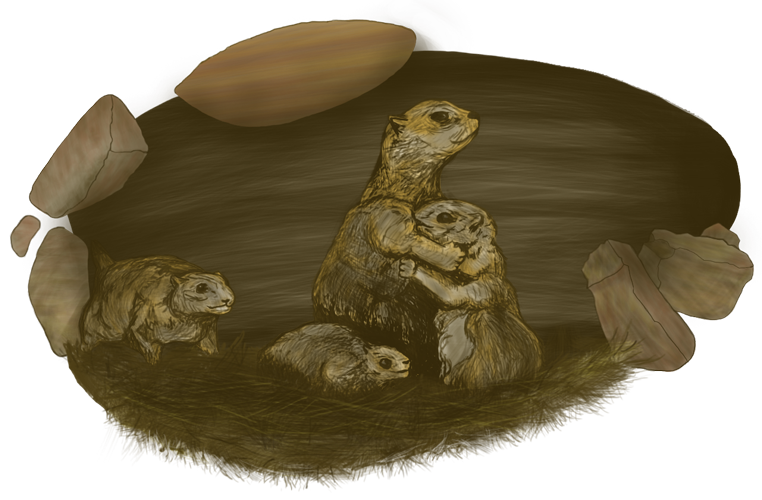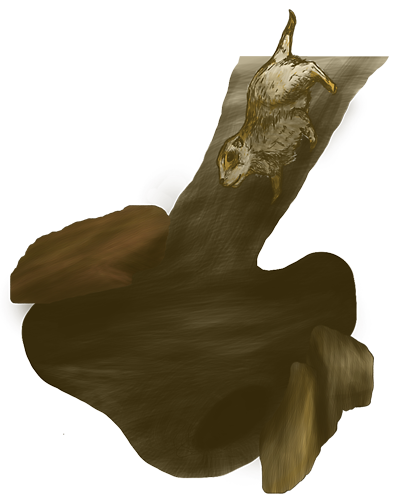2008 Translocation with Post Release Survival Study

In the summer of 2008, 195 Gunnison’s prairie dogs were translocated from areas in Flagstaff, AZ that were slated to be poisoned or developed. Habitat Harmony, Inc. in conjunction with Northern Arizona University and financial support from an Arizona Game and Fish Department Heritage Grant used this translocation opportunity to help research the one-year post release survival success and different release techniques for Gunnison’s prairie dogs. We hope this research will aid our understanding of successful translocations for prairie dogs in need of new homes in the future.
Special thanks go to all the amazing volunteers and field technicians and interns that assisted with trapping and observations of the prairie dogs in 2008 and 2009! Thank You.
During the summer of 2009, we attempted to re-trap and identify all the translocated survivors and their pups. Through observations, re-trapping, a PIT tag scanner deployed at the burrow openings, and remote cameras, we identified a total of 63 tagged translocated adult prairie dogs and 84 pups for a total estimated population of 147 prairie dogs one year after the translocation. Furthermore, the prairie dogs dug hundreds of new holes and spread out into the grassland surrounding the release area. An unfortunate discovery of our research is witnessing and documenting the toll human hunting and target shooting may take on prairie dog survival. We recommend additional management actions to limit hunting and protect newly translocated colonies. Our research shows that translocations of prairie dogs can, in fact, provide a valuable conservation tool for rescuing displaced prairie dogs and re-establishing abandoned colonies for a Species of Greatest Conservation Need.
Click here to download a pdf of "Translocation of Gunnison’s Prairie Dogs From an Urban and Suburban Colony to Abandoned Wildland Colonies" by Emily Nelson and Tad Theimer. This Article was printed in the Journal of Wildlife Management.
Click the read more link below to see pictures and learn more about the translocation project.

Gunnison’s prairie dogs living in-between Route 66 and the railroad tracks were in need of relocation to a new home. Ten pups can be seen at this capture location in July 2008. (Photo by E. Nelson)

Live traps, baited with a horse sweet feed mixture of corn, oats, barley, and molasses, were used to catch the prairie dogs. (Photo by E. Nelson)

Trapped prairie dogs were covered with burlap, moved to the shade, and given a coterie/capture location identification tag. They were then misted with a puppy/kitten approved flea and tick spray to ensure the prairie dogs were not carrying any fleas to their new homes. The comfort and safety of every prairie dog was very important to maintain throughout the trapping process. We provided additional sweet feed and fresh produce to help reduce their stress. The prairie dogs especially loved being fed baby carrots and corn-on-the-cob! (Photo by D. Lamkin).

In order to follow each individual’s success in their new home, each prairie dog was given a unique marking for future identification. The prairie dogs were given a small numbered metal ear tag in each ear, as well as a PIT tag (also known as a microchip) in their upper back. We hope to place PIT tag scanners at the burrow openings in the summer of 2009 in order to passively identify individual prairie dogs by their PIT tag numbers as they pass in and out of their holes. (Photo by N. Renn)

Some of the prairie dogs were released directly into an old, abandoned prairie dog hole. All of the release sites were selected and approved by the Arizona Game and Fish Department and the land owners. Every burrow was dusted with flea powder prior to the prairie dogs release. Supplemental feeding, including sweet feed, sunflower seeds, watermelon, apples, carrots, lettuce, and corn-on-the-cob, was provided to all the released prairie dogs for up to three weeks after their release, to help them get used to their new homes. (Photo by N. Renn)

Some of the prairie dogs were released into acclimation pens that were temporarily fitted over an abandoned prairie dog hole. We wanted to see if the acclimation pens would help reduce predation by predators or limit dispersal by the prairie dogs while they became adjusted to their new homes. (Photo by N. Renn)

The translocated prairie dogs seem to be doing well in their new location so far, despite the presence of new predators, including Golden eagles, coyotes, badgers, hawks, rattlesnakes, and human hunters. (Photo by N. Renn)

Within a few weeks after release, the relocated prairie dogs had dug many new burrows and expanded their colonies in the surrounding open grasslands, uninhibited by the development of the city they once knew in their former home. They were observed throughout the fall until they became inactive for hibernation. We watched the prairie dogs kissing, barking, digging, carrying mouthfuls of grassing bedding, and eating the native vegetation – respecting them for all they do when they restore the prairie in their presence! (Photo by N. Renn)

Burrowing owls, a protected species, are commonly seen using the prairie dog burrows at the release sites.
(Photo by E. Nelson)

Pronghorn antelope are seen running through a prairie dog colony. (Photo by E. Nelson)

Prairie rattlesnakes are also common on prairie dog colonies. (Photo by N. Renn)

Golden eagles commonly hunt prairie dogs for food. (Photo by N. Renn)

Prairie dog pups seen nursing from their mother. (Photo by J. Byers)

Prairie Dog #38 was a translocated adult male captured near the railroad tracks in Flagstaff. In the summer of 2009 he set up a spacious territory and raised five pups with female prairie dog #30 at their new grassland home. (Photo by N. Renn)

Mother prairie dog with her pups. (Photo by J. Byers)

A translocated prairie dog is busy maintaining her burrow in 2009. (Photo by remote camera)

Prairie dogs greet each other and determine their relatives by kissing. (Photo by remote camera)

Mother and son prairie dogs “kissing”. (Photo by remote camera)

A translocated prairie dog looks out at his new home. (Photo by remote camera)
A Message to Humans

"I used to be a city fellow. I grew up with the city noises of cars and trains and machines and humans. My family lived close to downtown Flagstaff not far from the railroad tracks along Route 66. What a busy, frightening place it was."
Read My Letter to You












